
Jean Baptiste Alphonse Déchauffour de Boisduval was a French lepidopterist, botanist, and physician.
Entomology, the study of insects, progressed between 1800 and 1850, with the publication of important texts, definition of new orders such as Aphaniptera and Strepsiptera, and the shift to specialization. The following timeline indicates significant events in entomology in this time period.

Léon Jean MarieDufour was a French medical doctor and naturalist.

Sylvain Auguste de Marseul was a French Roman Catholic priest and entomologist. He taught in the Petit séminaire de Paris from 1833 to 1836. In 1842, founded a college at Laval, then from 1850 to 1853, he taught in Paris. In 1854, he left his college for America where he remained eight months and discovered entomology. The abbot of Marseul was the author of many publications. He founded in 1864 a review devoted to the Coleoptera and named L'Abeille, the Bee. On his death this publication was continued by Ernest Marie Louis Bedel (1849-1922) then by René Gabriel Jeannel (1879-1965). The abbot also studied the history of the beginnings of French entomology in a series of review article in the Bee under the generic title Entomologistes et de leurs écrits, Entomologists and their writings. His collection is conserved in the Muséum national d'histoire naturelle and his library in the Société entomologique de France.

Eugène Séguy was a French entomologist and artist who specialised in Diptera. He held a chair of entomology at the Muséum national d'histoire naturelle in Paris from 1956 to 1960. He is also known for establishing the Diptera section at that museum. This entomologist is often confused with a French artist with a similar name: Émile-Allain Séguy (1877–1951). The latter is known for his pochoir artworks representing plants.
Jean-Jacques Kieffer was a French naturalist and entomologist who specialised in the study of parasitic insects. Educated as a priest, Kieffer taught natural science in Bitche, Lorraine while working on the description and classification of insects. His work and publications later became a predominant source of description and classification for entomologists in the early 20th century, in particular with regard to parasitoid wasps, midges, and mosquitos.

Lucien Berland was a French entomologist and arachnologist
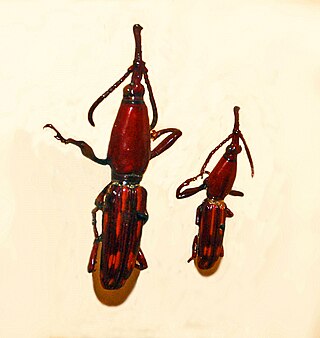
Orychodes digramma is a species of Brentidae family. It occurs in Papua New Guinea. It was first described in 1835 by Jean Baptiste Boisduval within Arrhenodes. it is currently accepted under the genus Orychodes.
Rémy Perrier was a French zoologist. He was the younger brother of zoologist Edmond Perrier (1844-1921) who directed the French National Museum of Natural History from 1900 to 1919 and founded the Friends of the Natural History Museum society in 1907.

Scatopse notata is a species of fly in the family Scatopsidae. It is found in the Palearctic.
Apiloscatopse scutellata is a species of fly in the family Scatopsidae. It is found in the Palearctic.
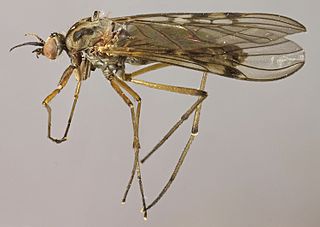
Sylvicola punctatus is a species of fly in the family Anisopodidae. It is found in the Palearctic.

Bibio johannis is a species of fly in the family Bibionidae. It is found in the Palearctic.
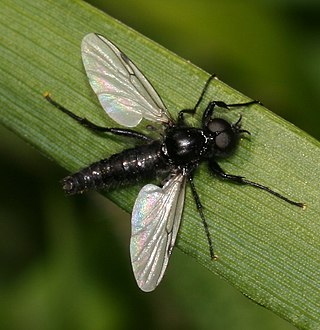
Bibio leucopterus is a species of fly in the family Bibionidae. It is found in the Palearctic.
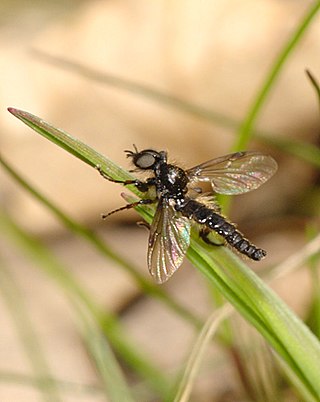
Bibio lanigerus is a species of fly in the family Bibionidae. It is found in the Palearctic.
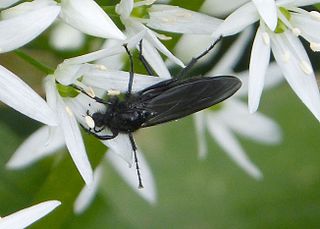
Dilophus febrilis is a species of feverfly the family Bibionidae. It is found in the Palearctic.

Juan (Jean) Brèthes, also known as Frère Judulien Marie or Juan Brethes was an Argentine scientist, naturalist, entomologist, ornithologist, zoologist and geologist. He was the first entomologist of the National Museum, today known as the Argentine Museum of Natural Sciences. He was a close collaborator of Florentino Ameghino, and translated several of his works into French. Thanks to his intense activity, he systematized a large number of Latin American insect species. He was a precursor in the fight against agricultural pests at a time when insecticides had not been developed to combat them.
Belgica albipes is a species of non-flying lake fly first described by Eugène Séguy in 1965. Belgica albipes is part of the genus Belgica and the family Chironomidae. The insect lives in the Crozet Islands.
Rhopalia is a genus of flies in the family Mydidae.